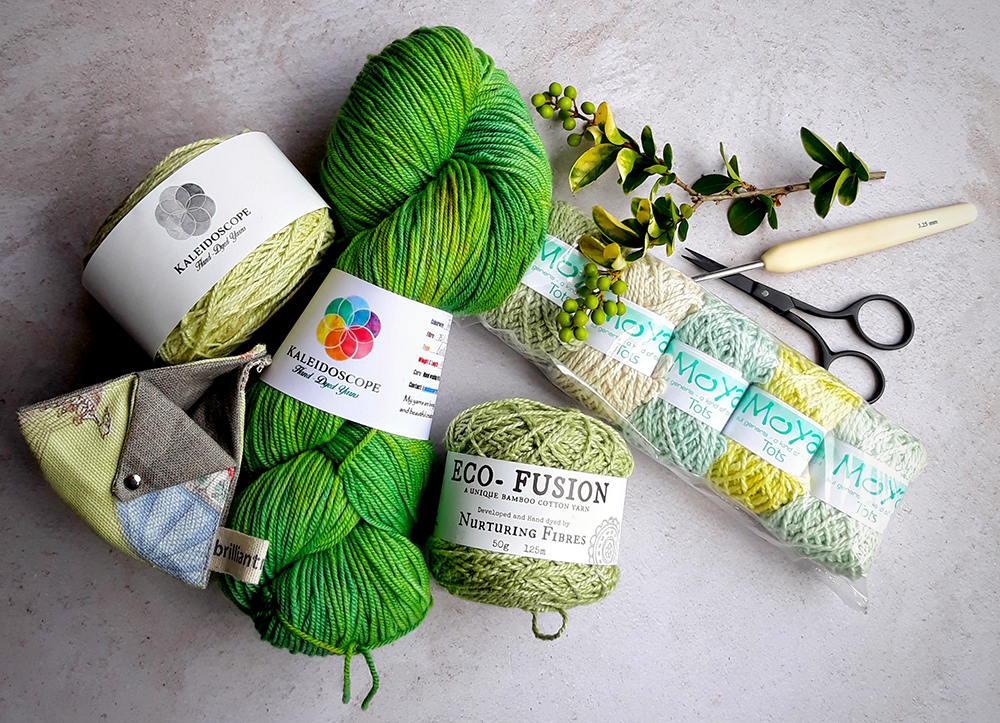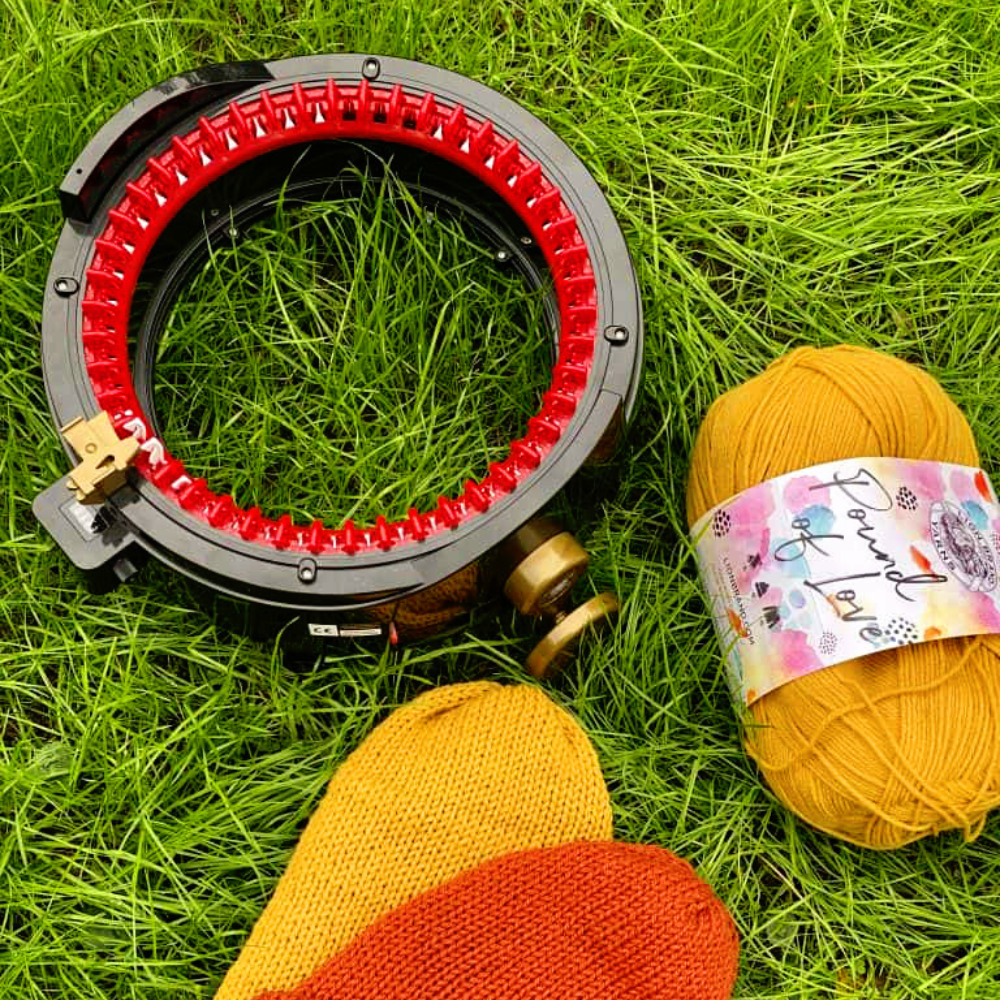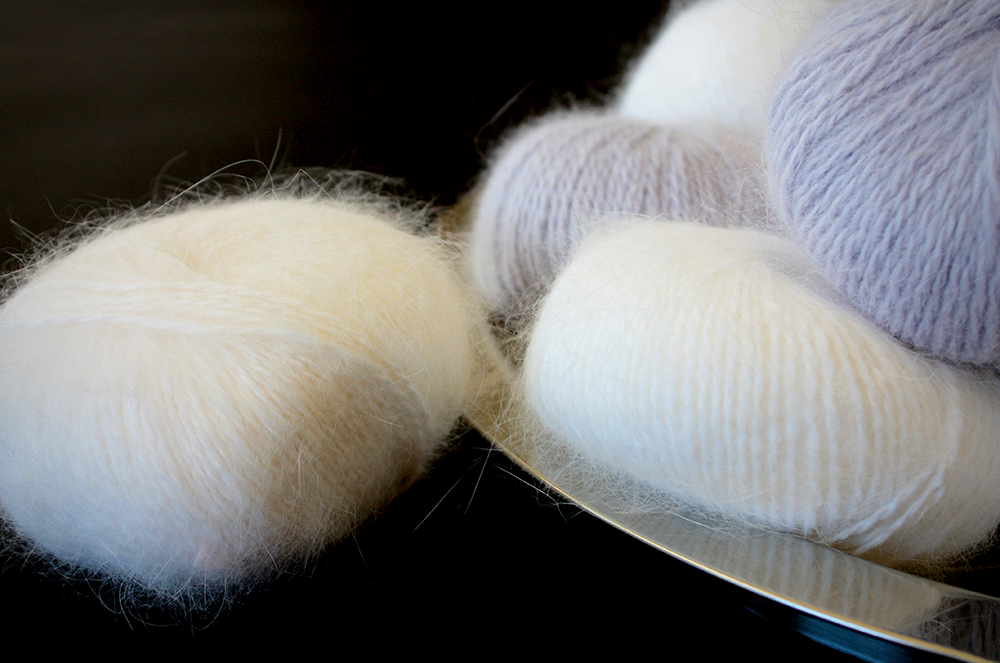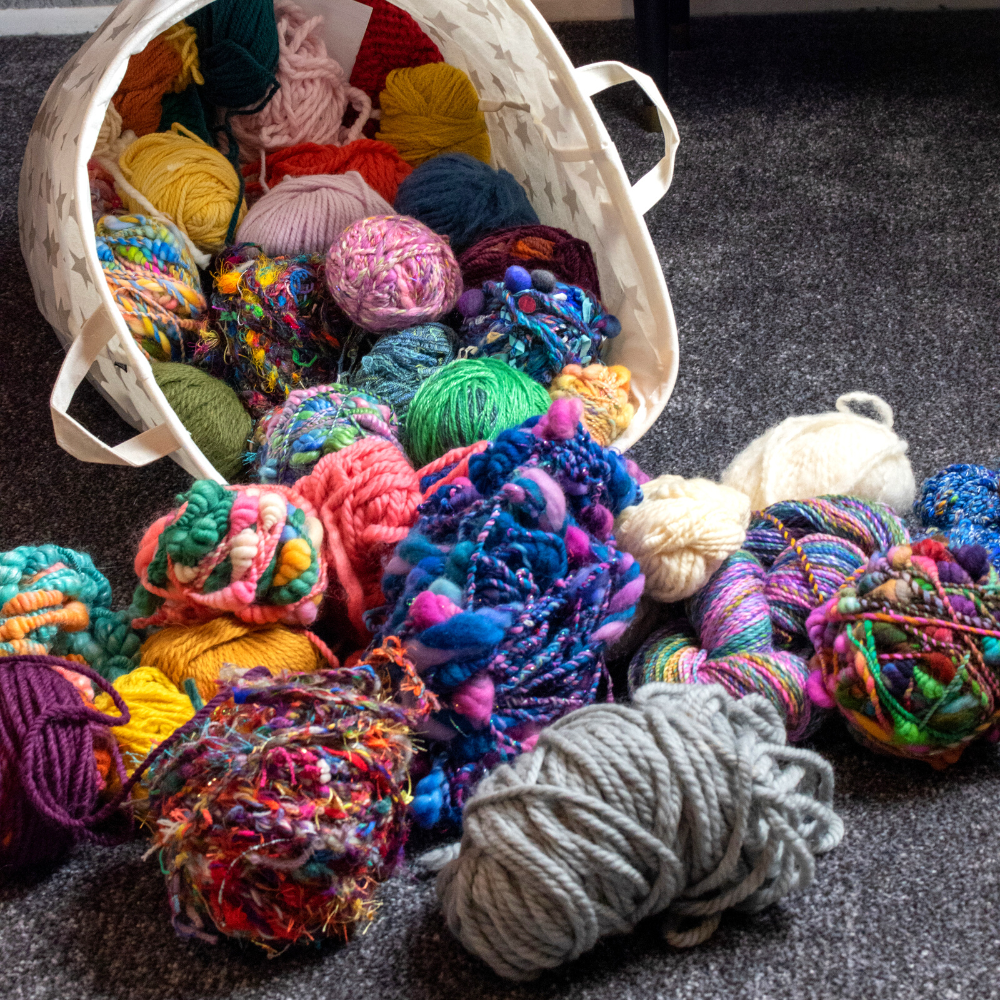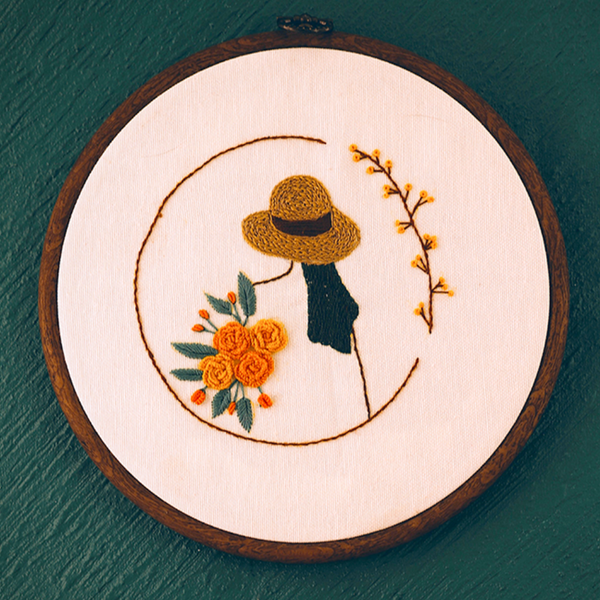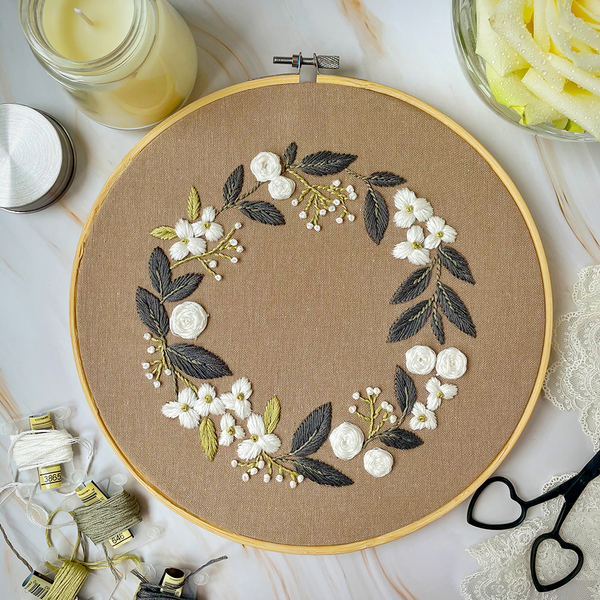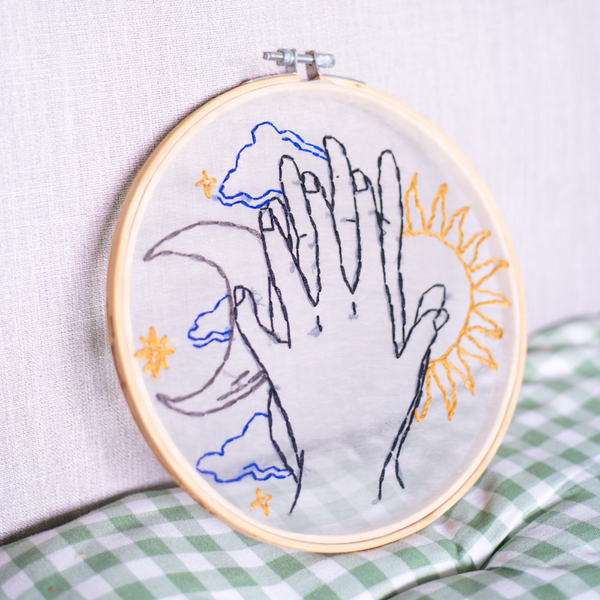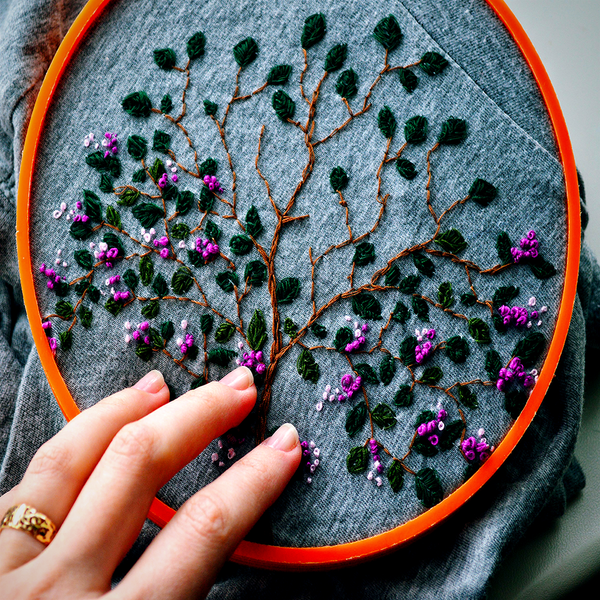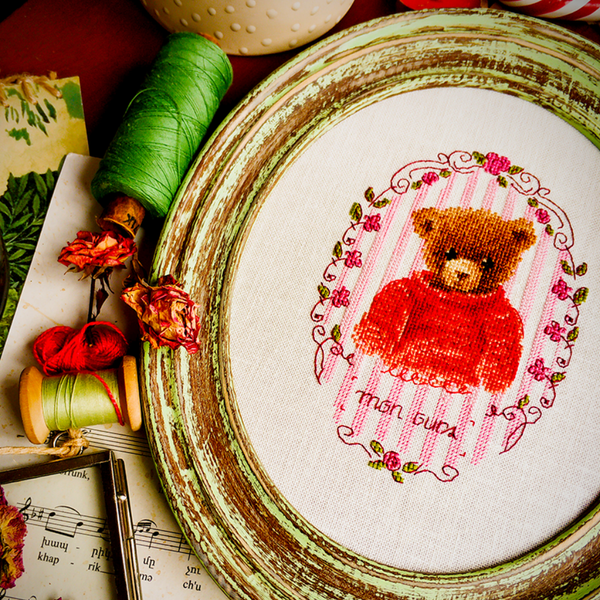Attention all artists and yarn enthusiasts!
Have you ever found yourself surrounded by a sea of colorful yarns, desperately trying to pick the perfect one for your next knitting project?
Well, look no further because we are about to dive into the world of yarns!
Whether you're a newbie looking to experiment or an experienced creator searching for the best yarns to create stunning masterpieces, this blog post is for you!
Introducing the Sentro knitting machine, a game-changing tool that will revolutionize the way you create stunning yarn masterpieces; whether you're a beginner or a seasoned pro, this knitting machine has got you covered.
With the vast array of yarn options available, it can be overwhelming to determine which ones work best for your project and machine.
We will delve into the world of yarns that are perfectly suited for this incredible machine.
Get ready to unleash your creativity and discover the yarns that will take your knits to a whole new level.
From soft and delicate fibers to vibrant and bold textures, we've got it all covered.
So, grab a cup of tea (or your favorite beverage of choice), cozy up in your favorite knitting spot, and get ready for a yarn-filled adventure like no other.
It's time to explore the yarn galore that awaits us on this exciting knitting journey!
Let's dive in, shall we?
Key Takeaways:
- Understanding the compatibility of different yarns with Sentro knitting machines is crucial for optimal results.
- Weight yarn and fiber content are significant factors in determining the best yarn for your Sentro machine.
- Regular maintenance and correct settings can prevent issues like dropped stitches and ensure a smooth knitting process.
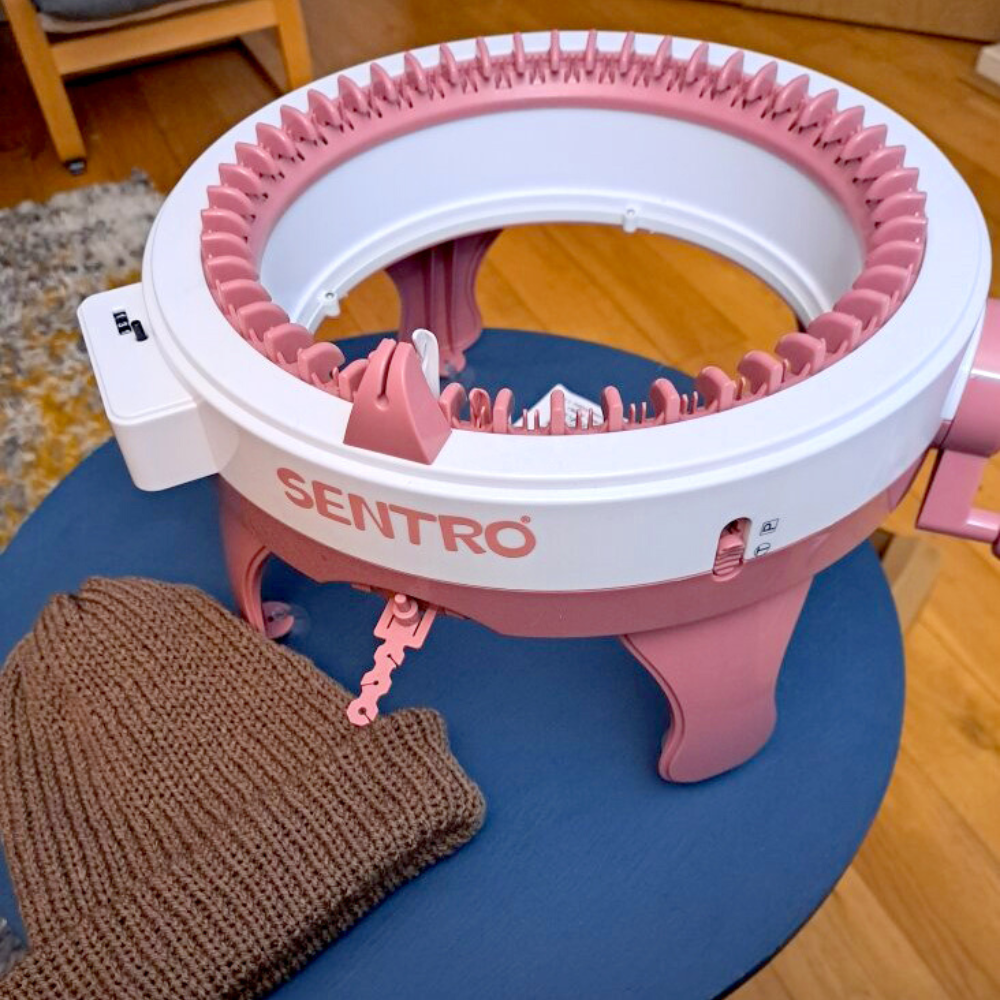
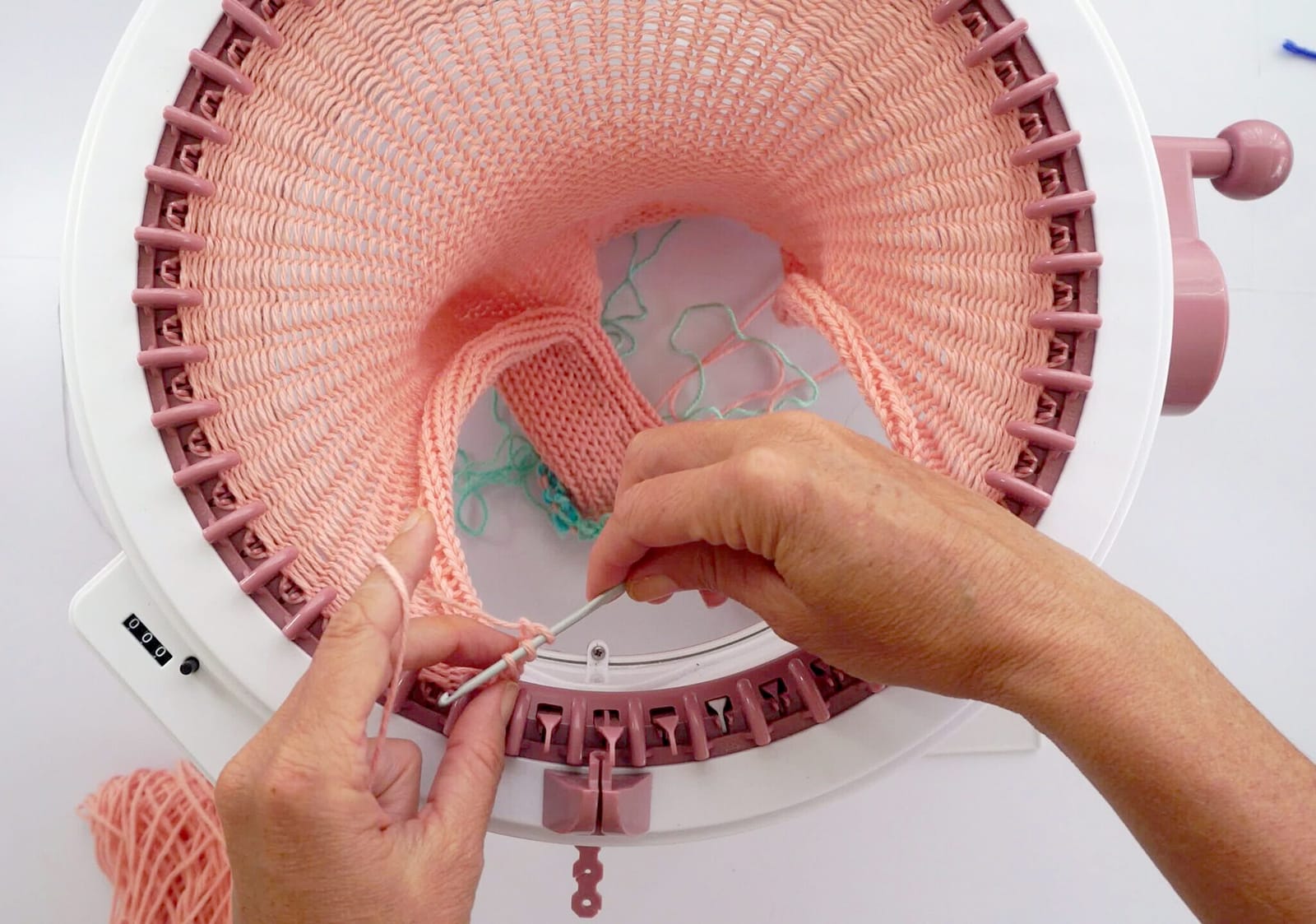
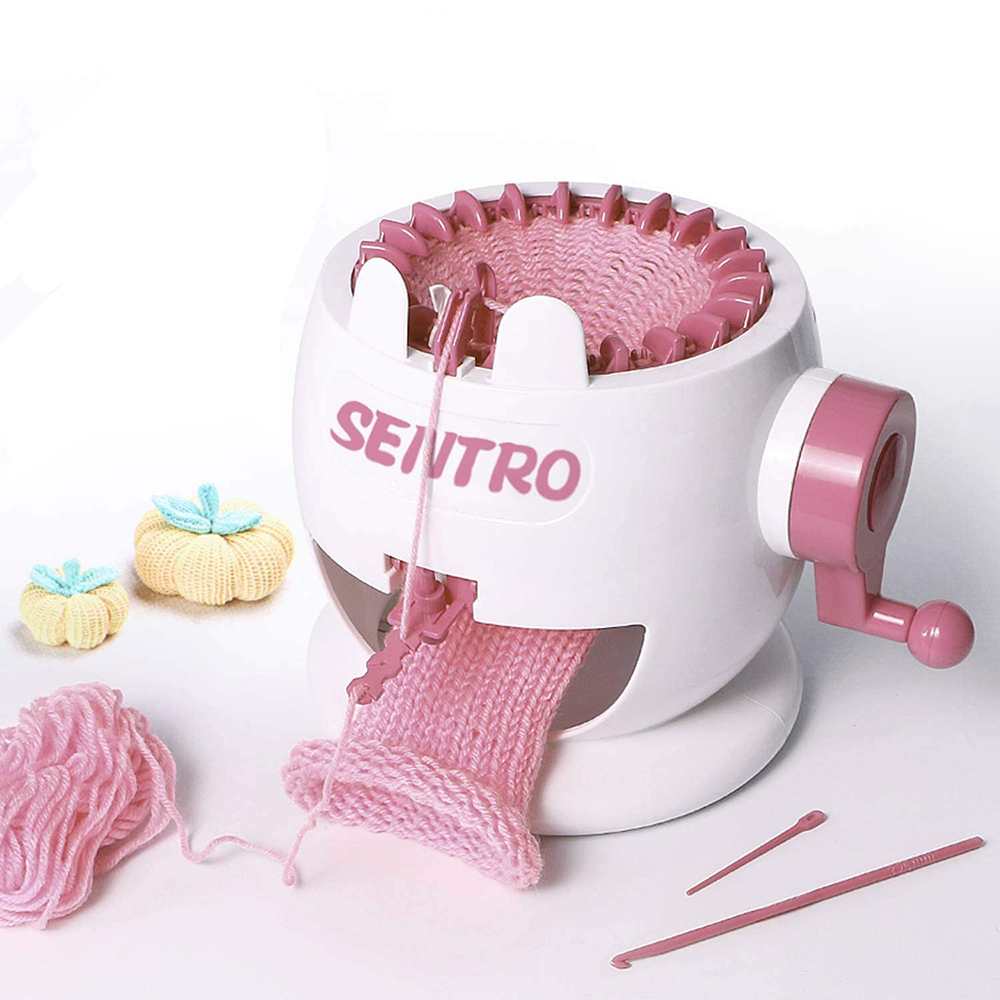
The World of Machine Knitting
Knitting enthusiasts and crochet and knitwear designers are always on the lookout for the best tools and materials to bring their creative visions to life.
The knitting machine has become a popular choice for those looking to efficiently create knit hats, scarves, and even entire pattern libraries.
However, not all yarns are created equal when it comes to machine knitting.
You're probably wondering what types of yarn are best suited for your trusty Sentro knitting machine.
While there are a plethora of yarn options out there, not all are created equal, especially when it comes to machine knitting.
In general, yarns that work well with standard knitting needles may not necessarily work well on a machine knitting setup.
That's why we're here to guide you through the world of yarn galore and help you choose the perfect ones for your Sentro machine.
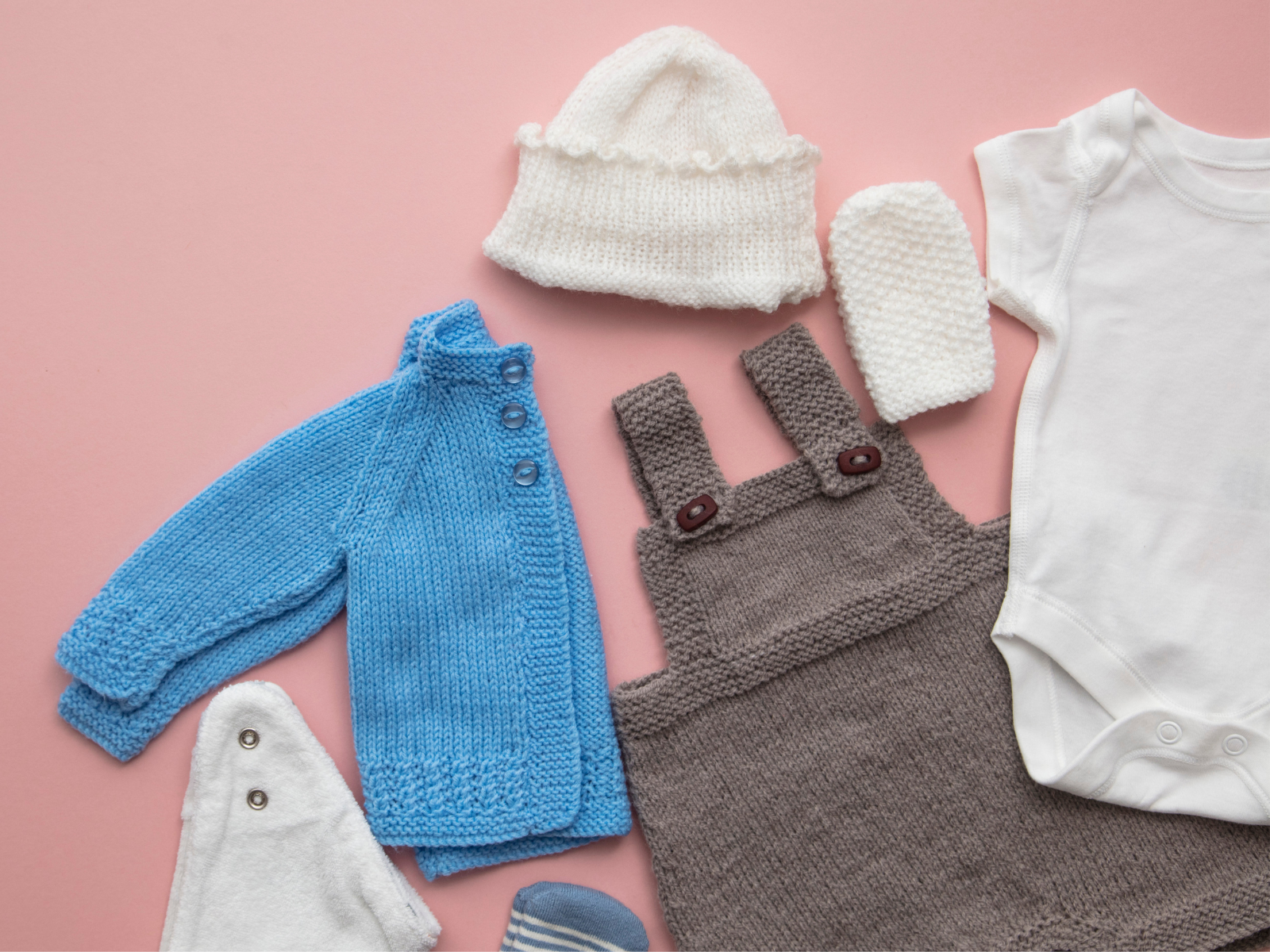

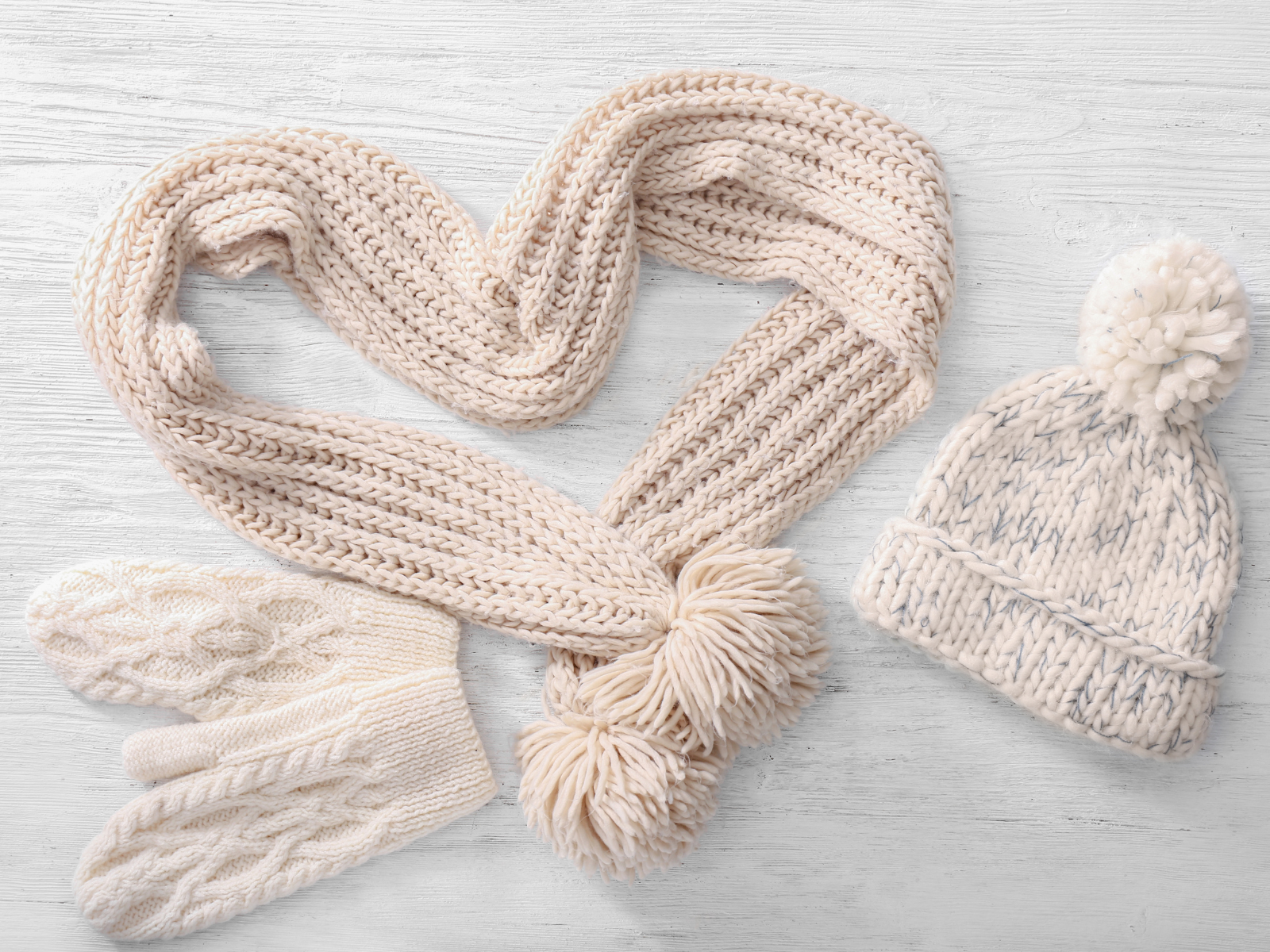
The Importance of Yarn Weight
When looking for yarns compatible with your Sentro knitting machine, yarn weight is a critical factor.
Yarn weights can be broken down into the following:
- Lace: This weight is used for delicate knitted projects, such as shawls and wraps.
- Fingering: Perfect for creating detailed patterns and lightweight garments like socks and gloves.
- Sport: Ideal for hats, scarves, and other apparel items.
- DK (Double Knitting): Known to be versatile in its uses, this yarn weight can be used for simple and more complex projects.
- Worsted: This weight is great for creating blankets, sweaters, and other larger items.
- Bulky: Used mainly for chunky knits like hats and scarves.
- Super Bulky: Perfect for quick and cozy projects like oversized sweaters or afghans.
The weight of your yarn affects the gauge and tension on your machine, which can significantly impact the outcome of your project.
Choosing a yarn that is too heavy or too light for your
The machine is designed to handle a range of yarn weights, but not all weights will produce the same quality of knitwear.
Light to medium weight yarns, such as sport or DK weight, are often the best choices for a Sentro machine.
These yarns glide smoothly through the machine's needles, reducing the risk of dropped stitches and ensuring an even knit.
Conversely, bulky yarns can pose a challenge.
While the Sentro machine can accommodate some heavier yarns, they may lead to increased tension and stress on the machine, potentially causing damage or uneven stitches.
It's essential to test a small swatch before committing to a larger project with a bulky yarn.
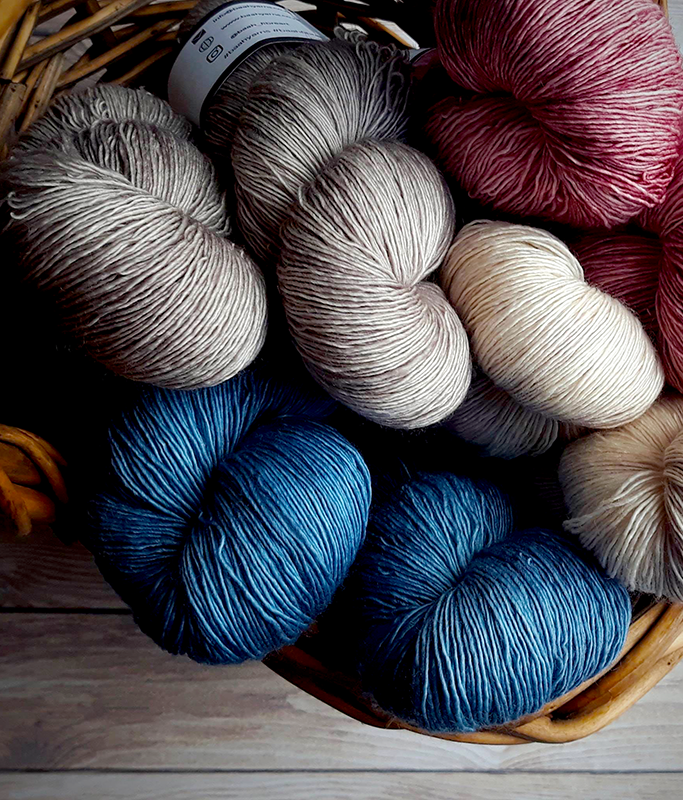
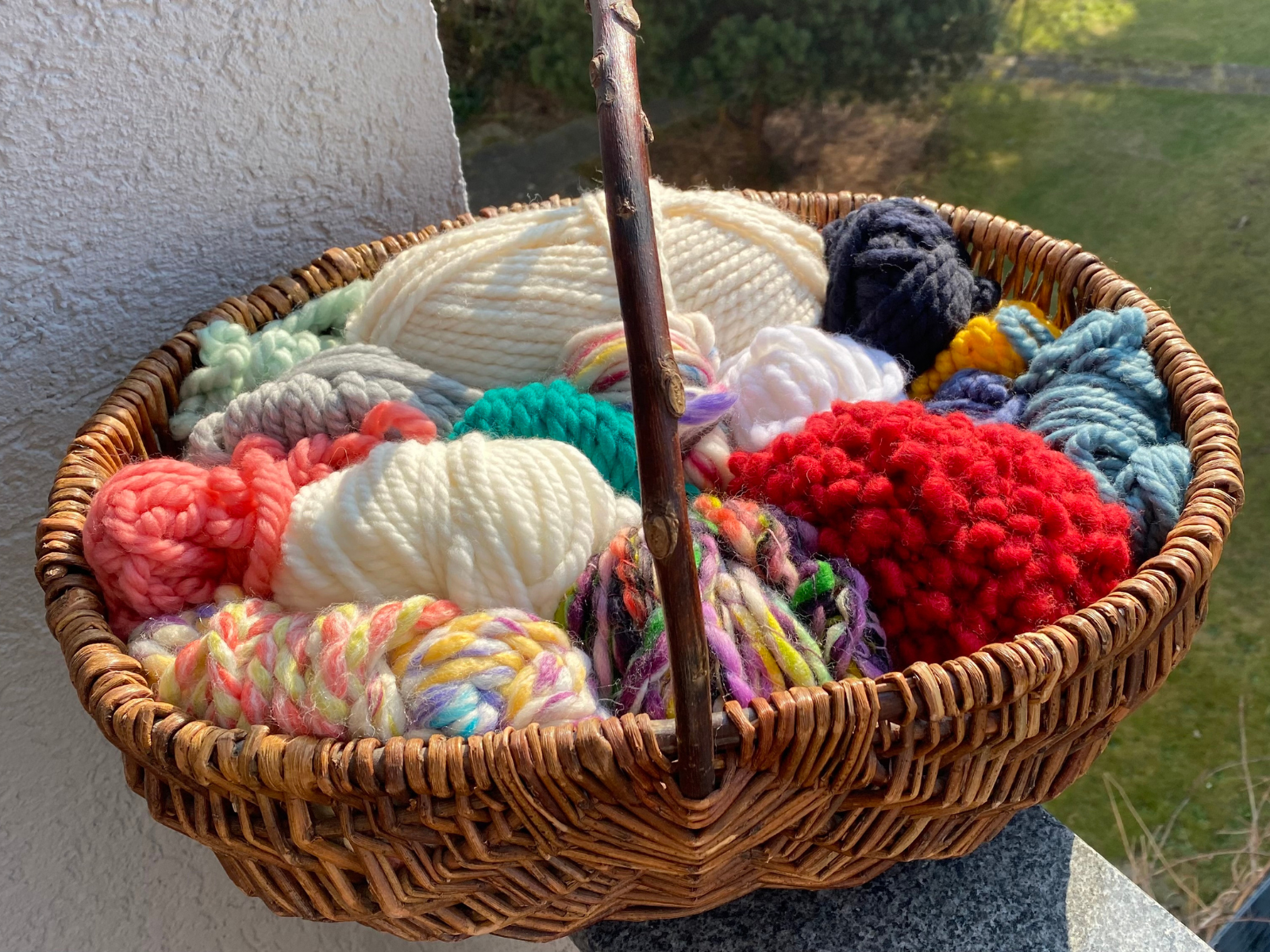
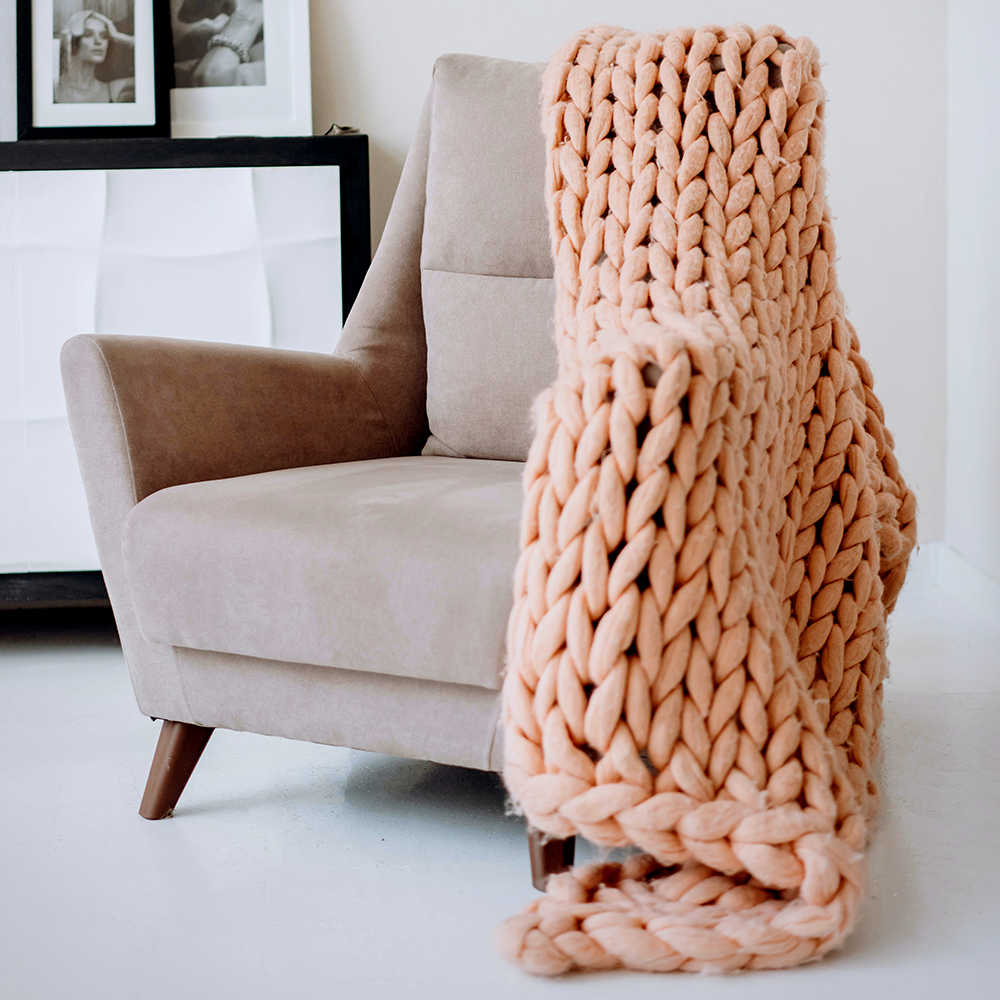
Fiber Content Matters
The fiber content and type of yarn is just as important as the weight.
Different fibers have different properties that can greatly impact your knitting experience.
The common types of fiber used in machine knitting are:
- Acrylic: This synthetic fiber is popular for its affordability and ability to hold shape well.
- Cotton: A natural fiber that is breathable and soft but not as stretchy as others.
- Wool: Known for its warmth and insulating properties, wool is a popular choice for winter knits.
- Alpaca: Similar to wool, alpaca yarn offers warmth and softness without feeling itchy or heavy on the skin.
- Bamboo: This eco-friendly fiber is silky and smooth, making it perfect for lightweight projects.
- Silk: A luxurious choice that provides a soft and shiny finish to your knits.
Synthetic fibers like acrylic are popular for their durability and ease of care, making them a suitable choice for items like beanies, hats, and scarves.
Brands like Lion Brand Pound of Love and Red Heart Super Saver offer a variety of colors and are readily available at stores like Hobby Lobby.
Natural fibers, such as cotton and wool, offer a different feel and finish to your projects.
Cotton yarns are excellent for creating soft, breathable items but can be less stretchy, which may affect the final fit.
Wool yarns provide warmth and a classic hand-knit look but require more care when washing.
Blends of natural and synthetic fibers can offer the best of both worlds, providing the look and feel of natural fibers with the ease of care of synthetics.
Choosing the right fiber content for your project can make all the difference in the final product.
Consider the intended use of your item when selecting yarns; for example, a wool blend may be ideal for a cozy sweater, while an acrylic yarn would work better for a lightweight wrap.
Some popular yarn brands for machine knitting include:
- Lion Brand: A well-known brand with a variety of yarns suitable for machine knitting, including their popular Wool-Ease and Heartland collections.
- Knit Picks: Known for their affordable, high-quality yarns, Knit Picks offers a range of weights and fibers perfect for Sentro machines.
- Caron: A budget-friendly brand with a wide selection of colors and yarn weights, including their Simply Soft and One Pound collections.
- Red Heart: Another budget-friendly option with a vast color selection and machine-washable options, such as their With Love and Soft Essentials collections.
- Bernat: This brand offers both natural and synthetic fiber options, with popular choices like Baby Blanket yarn and Softee Chunky.
- I Love This Yarn!: Available exclusively at Hobby Lobby, this budget-friendly brand offers a variety of yarns perfect for machine knitting.
- Malabrigo: A luxury brand that offers unique hand-dyed yarns, perfect for creating one-of-a-kind pieces on your Sentro machine.
Don't be afraid to experiment with different yarns in your stash.
Sometimes, a yarn that doesn't seem like an obvious choice can work beautifully on a Sentro machine.
Use waste yarn to test how the machine handles the yarn and to check the resulting fabric's drape and stretch.
This experimentation can lead to unique textures and knitting patterns in your knitwear.
Remember that the Sentro machine is versatile and can create flat panels for items like sweaters or Sentro kneesocks.
By understanding the correct yarn to use, you can expand your entire pattern library and take on more complex projects with confidence.


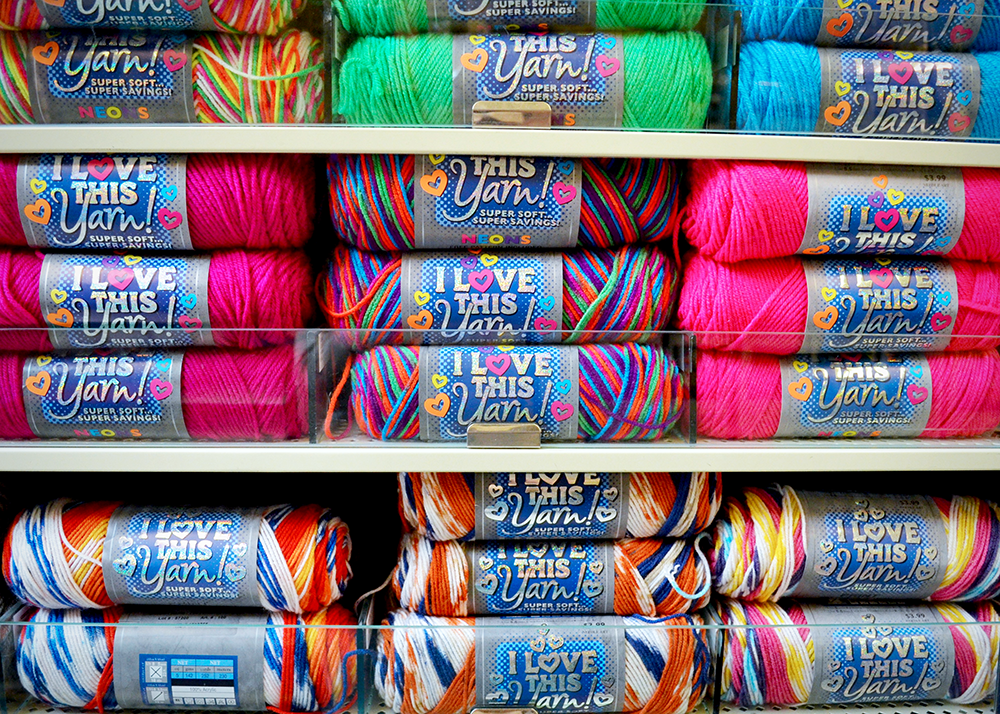
Challenges of Working with the Worst Yarns
Not all yarns are created equal, and some may be labeled as the worst yarns to use on a Sentro knitting machine.
These yarns might be too thick, like big twist skeins, or too slippery, causing them to miss stitches or not hold their loops properly.
This can lead to frustration and wasted time for anyone attempting to create a sweater or scarf.
It's important to recognize these yarns through trial and error and to share this knowledge with the community through blog posts or video tutorials.
By doing so, you can help others avoid the same pitfalls and ensure a smoother knitting experience.
In addition to identifying problematic yarns, it's also helpful to provide solutions or alternatives.
For instance, if a particular yarn consistently causes issues, suggesting a similar yarn with better results can be incredibly beneficial.
Engaging with your audience through comments and support links can foster a community of informed knitters who can collectively improve their craft.
Encouraging users to share their experiences with different yarns can also expand the collective knowledge base, making it easier for everyone to find the perfect yarn for their Sentro machine projects.
Remember, the goal is to turn the frustration of working with the worst yarns into a learning opportunity that benefits all.
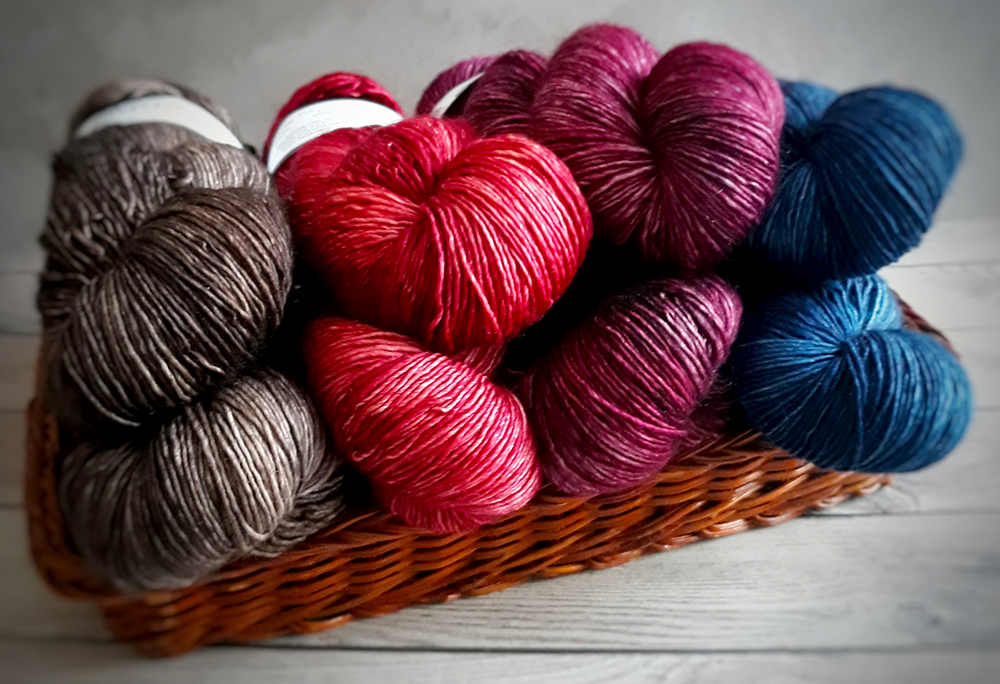

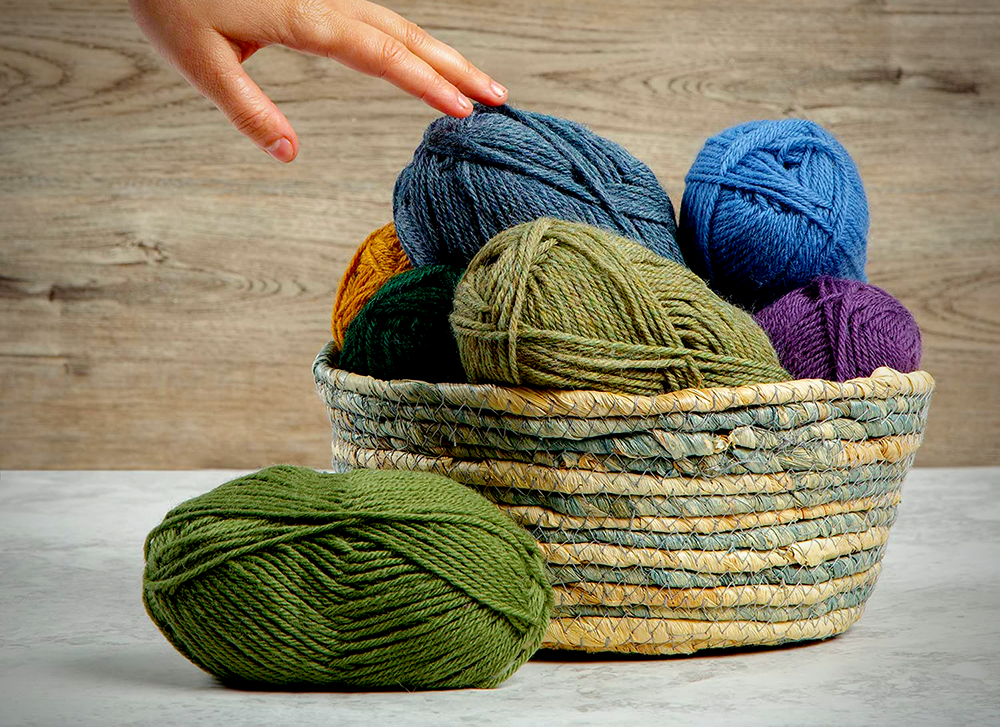
Maximizing Durability in Knitted Creations
When it comes to producing long-lasting hand knit items on your Sentro knitting machine, the choice of yarn is pivotal.
A crochet and knitwear designer knows that durability is not just about the technique but also the material.
Opting for yarns with a blend of natural and synthetic fibers can offer the resilience needed for everyday wear.
For instance, a skein that combines wool and nylon is excellent for making hats that can withstand the test of time and frequent use.
This combination allows for the warmth of wool with the strength of nylon, ensuring that your creations remain in pristine condition for longer.
Moreover, the twist of the yarn threads is another factor that contributes to the durability of your knitwear.
Tightly spun yarns tend to be more robust and less prone to pilling or breaking.
When selecting yarn for your Sentro machine, consider the ply and twist of the yarn.
A high ply count with a firm twist will often result in a sturdier stitch, which is essential for items that will see a lot of wear.
For additional guidance, many designers turn to video tutorials or blog posts that delve into the specifics of choosing the right yarn for durability in hand-knit projects.
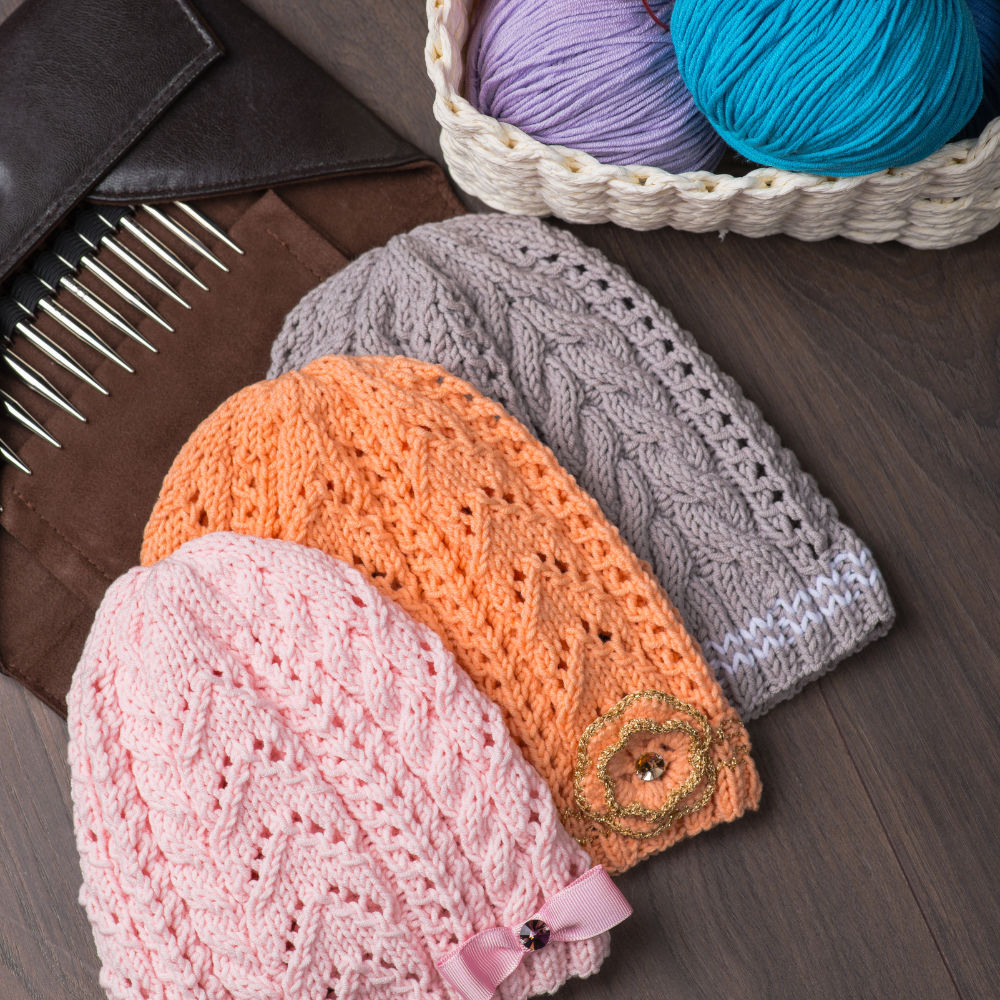
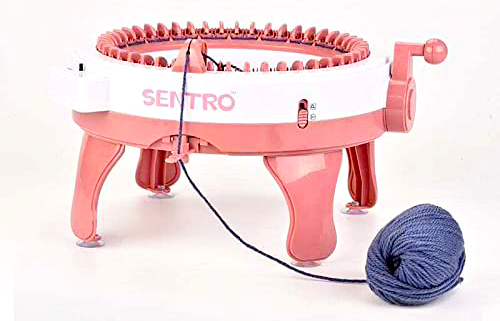

Yarns for Crochet Shawls and Knitwear Design
Crochet and knitwear designers often search for yarns that can add a unique texture and drape to their creations, especially when it comes to making delicate items like crochet shawls.
The Sentro knitting machine, while primarily used for knitting, can be a valuable tool for these designers.
By selecting the right yarn, one can create intricate loops and stitches that mimic hand-knit quality.
Thin, lightweight yarns often work best for shawls, as they hang beautifully and allow for intricate patterns to shine through.
It's essential to test these yarns on the Sentro machine to ensure the tension is correct and the fabric produced has the desired effect.
When considering yarn works for crochet shawls, designers should also think about the fiber content and how it will interact with the wearer's skin.
A soft, non-irritating yarn is crucial, as shawls often come into direct contact with the skin. Additionally, the color and dye of the yarn can affect the final appearance of the shawl.
Designers can use video tutorials to share their experiences with specific yarns on the Sentro machine, offering valuable insights and support to the crochet and knitwear community.
These tutorials can be posted on platforms like a Ko-fi blog, where viewers can leave comments and engage with the content.


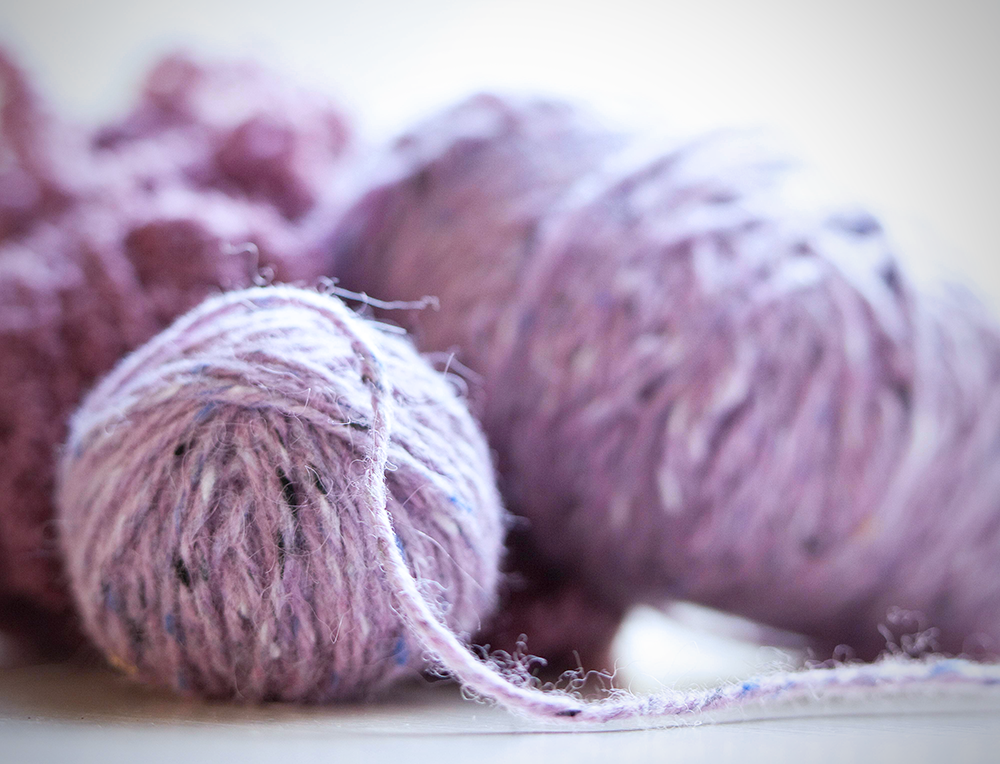
Engaging with the Knitting Community Online
The internet has revolutionized how crochet and knitwear designers share their work and engage with the community.
By posting your Sentro machine creations on platforms like Pinterest, Facebook, or a knitting blog, you can receive feedback, comments, and even knitting tips from fellow enthusiasts.
This interaction not only fosters a sense of community but also provides valuable insights into improving your craft.
For example, a post showcasing a unique stitch pattern on a newly designed shawl can prompt a discussion on stitch variations, leading to innovative design ideas and shared learning experiences.
Additionally, creating a video tutorial that demonstrates the process of making hats or other items with your Sentro machine can be a fantastic way to contribute to the community.
Not only does it help others learn, but it also establishes you as an authority in the field.
Encouraging viewers to comment on your video tutorial can lead to a lively exchange of tips and tricks, further enriching the collective knowledge.
By actively participating in these online forums, you can stay updated on the latest trends and techniques, ensuring that your hand-knit creations are always at the forefront of the craft.
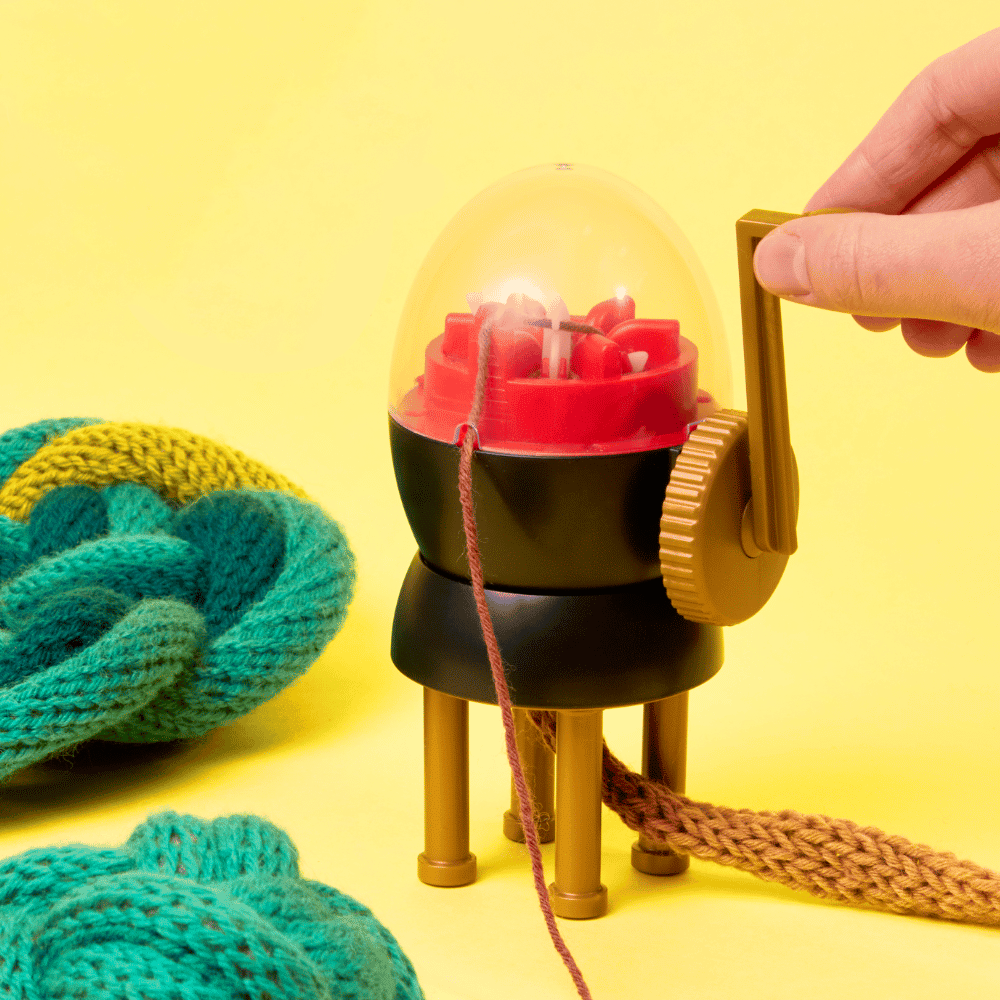
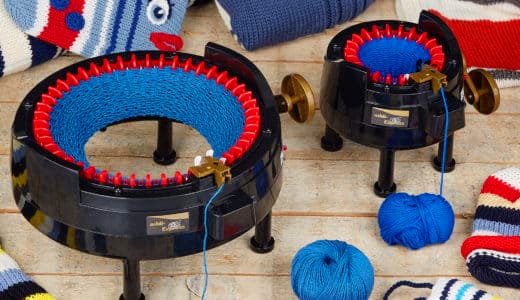
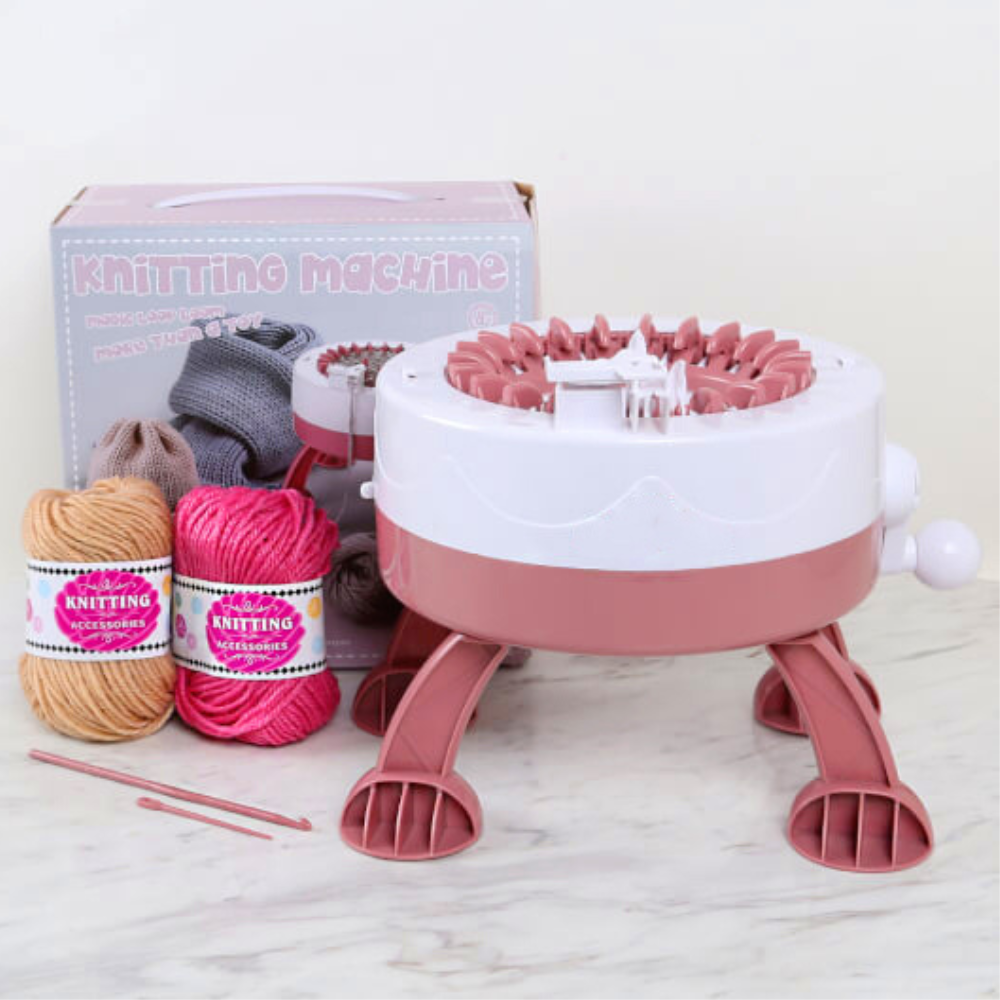
Sentro Machine Settings and Maintenance
To ensure your Sentro knitting machine works optimally with your chosen yarn, it's crucial to adjust the machine settings accordingly.
The tension dial should be set to accommodate the thickness of the yarn, preventing too tight or too loose stitches.
Regular maintenance, such as cleaning the needles and applying oil, can also help prevent yarn from snagging or the machine from jamming.
If you're new to machine knitting, consider watching YouTube videos or accessing exclusive video tutorials from Sentro maker notes or the Ko-fi blog.
These resources often provide valuable tips and show the projects step by step, helping you to avoid common mistakes and get full access to the potential of your machine.
Here are some tips for keeping your machine in top shape:
- Clean and oil the machine regularly: This helps to prevent build-up of dust or debris and keeps the needles running smoothly.
- Check for any bent needles or broken parts: These can impact the quality of your stitches and may need to be replaced.
- Use proper yarns for your projects: Using yarns that are too thick, slippery, or prone to shedding can cause issues with the machine and affect the final product.
- Adjust tension as needed: The tension dial should be set according to the thickness of the yarn being used for optimal results.
By taking care of your Sentro knitting machine, you can ensure it lasts for years to come and continues to produce beautiful hand-knit creations.
In addition to regular maintenance, it's also essential to store your machine properly when not in use.
Keep it covered and away from direct sunlight or extreme temperatures, which can cause damage over time.
With proper care and maintenance, your Sentro machine will be a valuable tool in your knitting arsenal for many projects to come.



Troubleshooting Common Issues
Even with the correct yarn, issues can arise.
Dropped stitches are a common problem that can occur if the yarn is too slippery or if the tension is not set correctly.
Keep a close eye on your work and use a crochet hook or a special tool to catch and correct dropped stitches as soon as they happen.
Tangles and knots in the yarn can also cause problems.
Ensure your skeins are wound correctly and that the yarn feeds smoothly into the machine.
This will help maintain an even tension and prevent the yarn from catching or snagging on the needles.
If you do encounter a tangle or knot, carefully untangle and rewind the yarn to avoid any further issues.
It's also helpful to have extra waste yarn on hand for testing and troubleshooting before starting your project.
Another common issue is uneven stitches or gaps in the fabric.
This can be caused by inconsistent tension or incorrect alignment of the needles.
Take care to set the tension correctly and ensure all needles are aligned on the same row before starting your project.
Refer to your machine's manual or online resources for specific troubleshooting tips.
There may be variations between different Sentro machine models, so it's essential to use the correct information for your particular device.
By being aware of these common issues and how to troubleshoot them, you can save time and frustration in your machine knitting journey.
Remember, practice makes perfect, and with patience and persistence, you will soon become a master at creating beautiful hand-knit items on your Sentro machine.


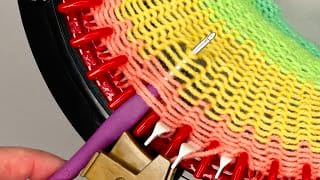
Expanding Your Machine Knitting Horizons
Machine knitting offers endless possibilities for knitwear designers and hobbyists alike.
The world of yarns is vast and wide, but not all yarns are created equal when it comes to machine knitting.
The best yarns for your Sentro knitting machine are those that are smooth, don't snag easily, and have a good stretch recovery.
Choosing the right yarn for your Sentro knitting machine is essential for successful projects, and light to medium weight yarns with the appropriate fiber content can make the knitting process smoother and more enjoyable.
Regular maintenance and correct machine settings are vital to prevent common issues like dropped stitches.
Experimentation with different yarns can lead to exciting discoveries and an expanded range of knitwear.
Experimenting with different yarns can be a fun way to add personality to your projects, but it's important to read labels and choose the appropriate yarn for your machine.
But, don't let the fear of using "bad" yarns hold you back from exploring.
Sharing your experiences and engaging with the knitting community online will allow you to collectively learn and grow as machine knitters.
By following these guidelines, knitters can ensure that their Sentro machine produces high-quality, beautiful pieces every time.
Whether you're a seasoned knitter or just starting out, we hope this guide has been helpful and has inspired you to get creative with your next machine knitting project!
So, put on some relaxing music, grab your favorite yarn, and let's get knitting!
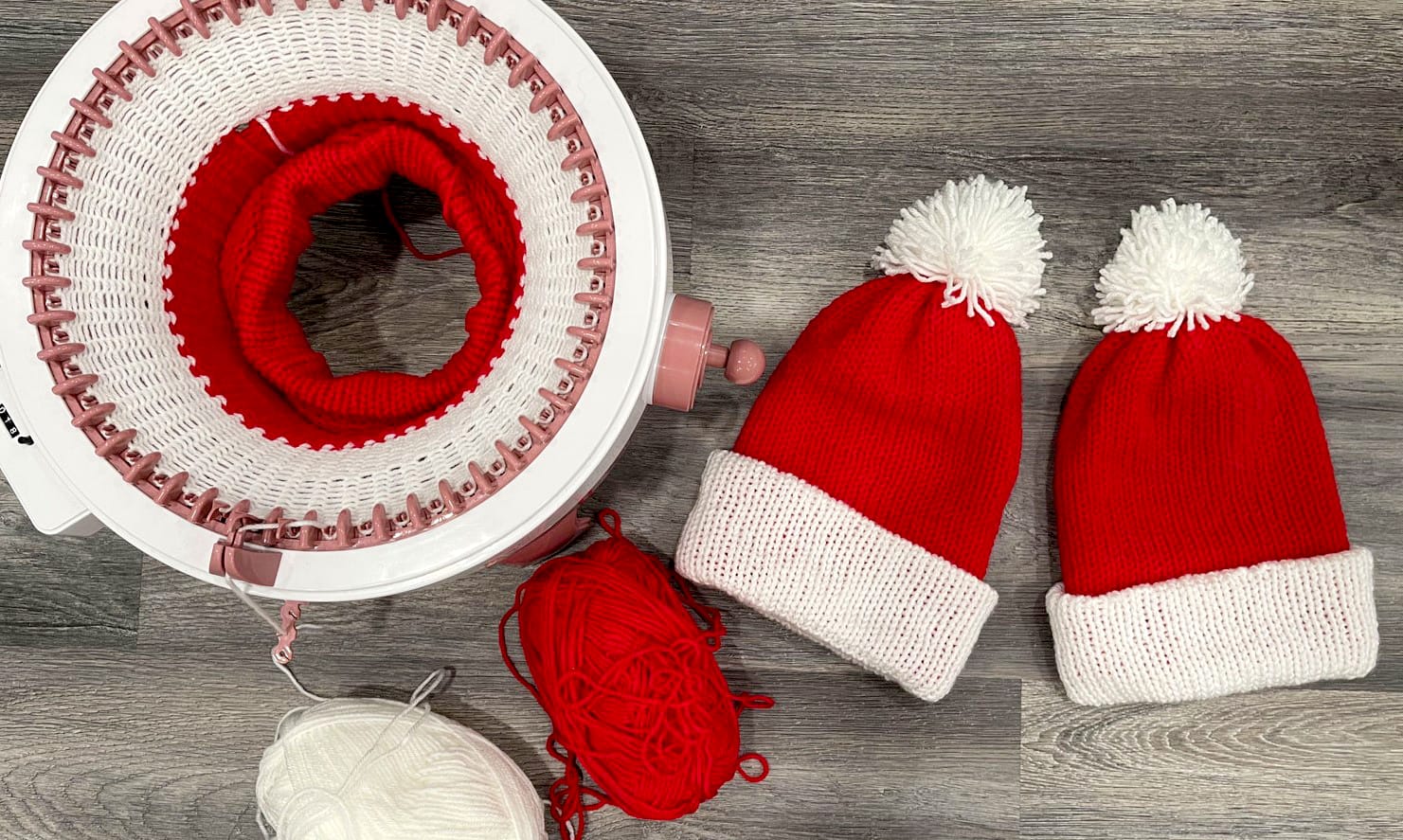
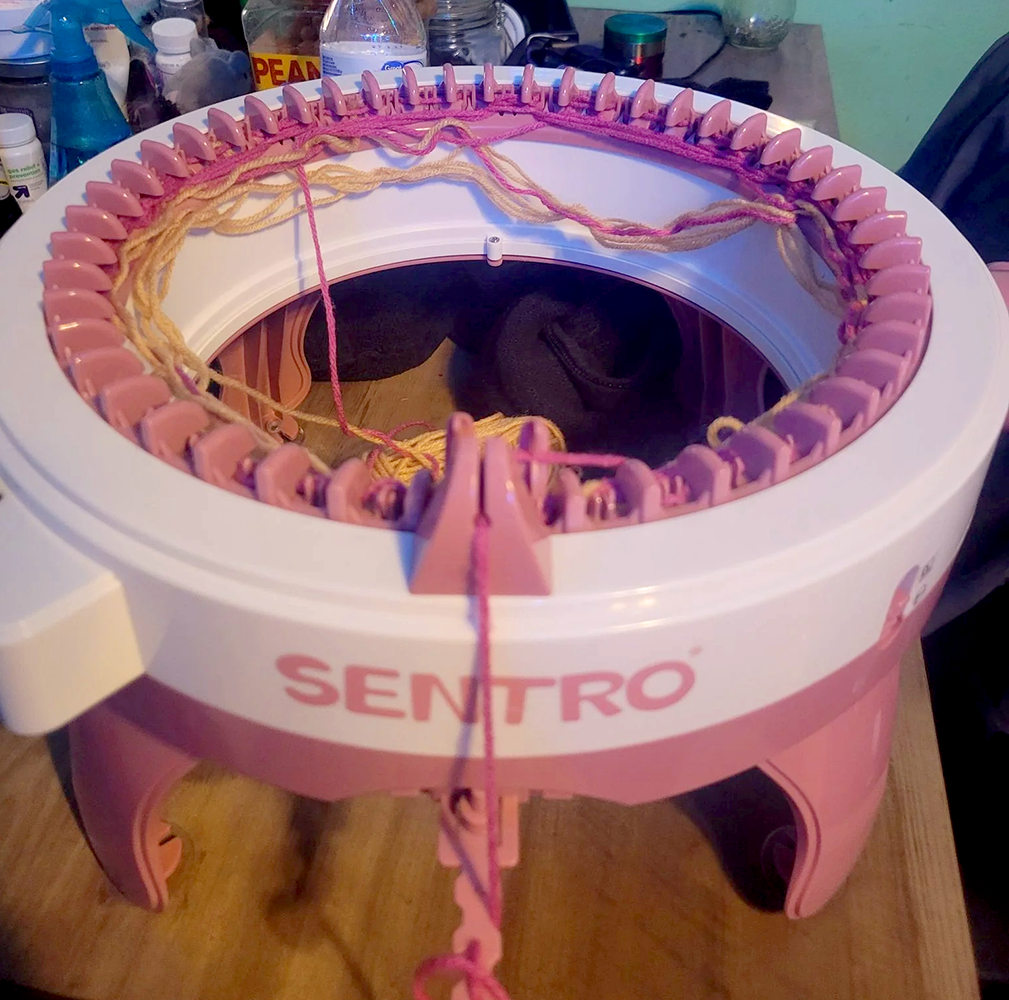

Interested in learning more about the different yarns you can use with Sentro knitting machines? Check out Yarn Checker's video!
Want even more content about creativity and art?
Be sure to check out all of our creative chronicles!
Eager to learn more about knitting and knitting machines?
Check out some of our other articles:
-Interchangeable knitting needles
-Can you knit socks on a knitting machine?
-Can you double knit on a knitting machine?
-Can you crochet with a knitting machine?
-Can you make money with a knitting machine?
